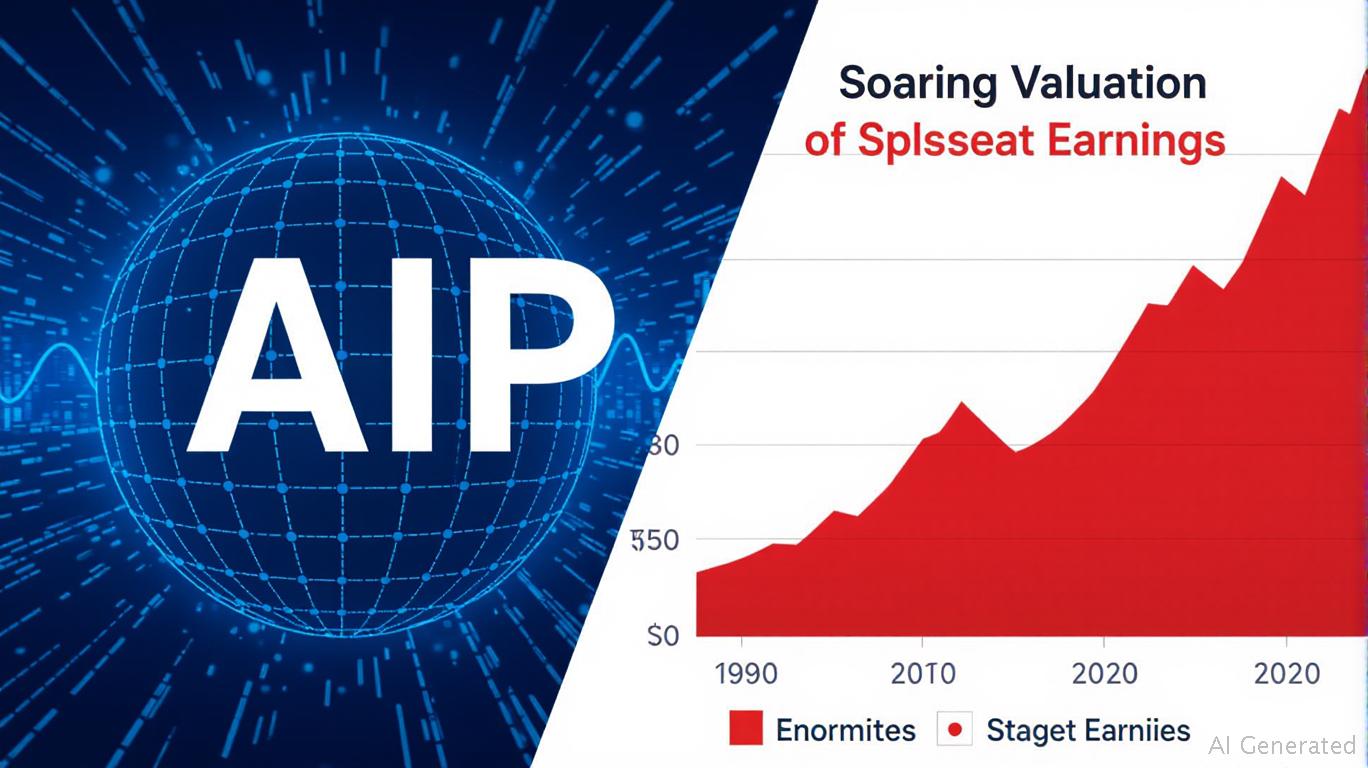Rhys NorthwoodSunday, Jul 6, 2025 9:09 am ET
![]() 10min read
10min read
The tech sector's relentless ascent over the past decade has been fueled by a mix of innovation and investor euphoria, but cracks are beginning to show. Nowhere is this tension more evident than in the case of Palantir Technologies (PLTR), a company hailed as an AI pioneer yet grappling with valuation multiples that defy economic gravity. As tariffs rise, geopolitical risks escalate, and the broader market's fixation on AI-driven equities reaches fever pitch, investors must ask: Is Palantir's stock a visionary play—or a bubble waiting to pop?
The Valuation Conundrum: When Growth Isn't Enough
Palantir's Q1 2025 results underscore its operational strengths: 39% year-over-year revenue growth to $884 million, driven by federal contracts and its AI platform (AIP). Yet its stock price has been a puzzle. Despite these wins, Palantir's price-to-sales (P/S) ratio of 105x—far outpacing peers like Microsoft (P/S of 7x)—has sparked warnings from analysts.

The disconnect is stark. While bulls argue Palantir's AI moat justifies its premium, skeptics highlight valuation metrics like a P/E of 394x, which is nearly 14 times that of the S&P 500. Even optimists at Loop Capital, who rate PLTR a “Buy” with a $155 price target, acknowledge the risks: “This stock is a bet on the future of AI, not today's earnings.”
Tariffs and the Supply Chain Squeeze
Enter the macroeconomic headwinds. Former President Trump's tariffs on Chinese tech imports, while eased in parts, have left a lingering scar on global supply chains. For Palantir, the threat isn't direct—its software doesn't rely on semiconductor imports—but the ripple effects are real.
First, tariffs have inflated costs for tech firms globally, squeezing margins and diverting capital from R&D. Second, U.S. government contracts—critical to Palantir's growth—are under scrutiny as fiscal austerity debates intensify. A prolonged trade war could delay approvals for projects like its $500 million ICE immigration tracking system, a linchpin of its federal revenue.
The AI Bubble: Overhyped, Overbought, Over?
Palantir's plight mirrors a broader market malaise. The AI sector's valuation bubble is now legendary: companies like PLTR trade at multiples that assume flawless execution for decades. Institutional investors are noticing.
Notable exits include Cathie Wood's Ark Invest and Stanley Druckenmiller's Duquesne Family Office, both reducing stakes after earlier gains. Retail investors have filled the gap, but their enthusiasm is fragile. As one analyst noted, “Retail buying can't sustain a stock this overvalued indefinitely.”
Investment Advice: Proceed with Caution
The writing is on the wall for overhyped tech names. Investors should:
- Focus on fundamentals, not hype. Palantir's 39% revenue growth is impressive, but its EV/EBITDA of 267.8x (versus Microsoft's 17x) suggests the market is pricing in perfection.
- Watch macro risks closely. Rising tariffs, a potential U.S. debt ceiling showdown, and a Federal Reserve wary of inflation could trigger a tech sector correction.
- Consider the sell side's math. The average analyst price target is $89.32—40% below current levels—a stark reminder of the downside.
Conclusion: Time to Rebalance
Palantir's story is compelling, but its valuation is a leap of faith. As geopolitical risks and overvaluation collide, investors must decide: Is PLTR a visionary leader—or a relic of the AI mania era? For now, the safer bet is to reduce exposure, wait for a valuation reset, and prioritize companies with tangible earnings growth. The AI revolution is real, but its stocks are not immune to gravity.
Gary Alexander is a pseudonymous analyst specializing in tech and macroeconomic trends. His work focuses on separating hype from reality in high-growth sectors.







 English (US) ·
English (US) ·